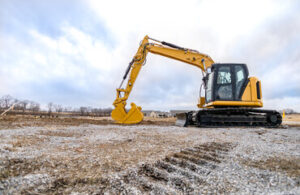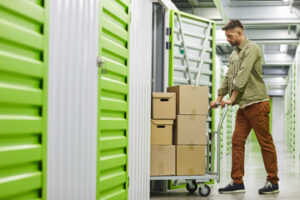The goal of Landscaping Springdale AR is to create an environment that is both beautiful and functional. Landscaping includes the planting of trees, grass, flowers, and shrubs. It also includes the use of hardscaping which include patios, walkways, retaining walls, and decks.

Plants act as natural cleaners, reducing dust and smoke particles in the air, and produce life-giving oxygen (one large tree can provide enough oxygen for a family of four). They also serve as a natural water filter and noise minimizer.
Landscaping is one of the most valuable home improvements that you can make. It can add up to 20% more value to your home and makes it more appealing to potential buyers. It’s important to remember that the ROI of landscaping depends on how much money you spend and what you put in.
Landscaping involves creating functional and visually pleasing outdoor spaces that are in harmony with the natural environment. It includes planting trees, shrubs, flowers, retaining walls and walkways. It can also include water features, such as ponds or fountains. The art of landscaping is to create a balanced, harmonious and elegant look that complements the architecture of your house.
Not only does a well-maintained lawn and thoughtful landscaping increase the resale value of your home, but it can also decrease energy costs. This is because plants help to keep the soil cool and reduce the need for air conditioning. They also provide shade and block out noise.
Studies have shown that the presence of greenery and nature improves mental health and wellness. The sight and sound of the rustling of leaves, birds chirping and the smell of fresh grass can lower stress levels and improve moods. It has even been proven that patients recovering from surgery heal faster when they have access to gardens and the outdoors. Landscapes can enhance the aesthetic appeal of neighborhoods and contribute to community identity.
It Increases the Appearance of Your Home
A well-manicured lawn, lush greenery, and thoughtfully placed flowers and trees add visual appeal to your home. This is one of the first things that potential buyers see, so it sets the tone for how they envision living in your house.
Landscaping also protects your property from damage. Different types of plants can reduce soil erosion, provide habitats for wildlife, and even help regulate the temperature inside your house. Additionally, trees can shield your home from wind and provide shade. Different drainage techniques can also prevent flooding and water buildup around your foundation.
Having an attractive outdoor space gives you the opportunity to spend more time outdoors. This can lower your stress levels and improve your mental health. You can unwind in the midst of nature by reading a book, or entertain your friends with a barbecue. Grass and trees release oxygen, so they also help keep your air clean.
A professional landscaper can make your garden look like a natural oasis. They will use plants and features that match the style of your home and create a seamless transition between indoors and outdoors. They can also expand your living area with paved areas, fire pits, and outdoor kitchens. This can increase your usable space and allow you to host more guests at once. In addition, this type of landscape can help you relax by reducing noise pollution from nearby roads or neighbors.
It Increases the Value of Your Property
Landscaping increases the value of your property by boosting its curb appeal and adding functionality. Vibrant flower beds and carefully arranged pathways make for a great first impression and captivate potential buyers. Studies have shown that well-landscaped homes sell faster and at a higher price than similar unlandscaped houses.
In addition to improving the aesthetics of your home, landscaping can also add value by lowering your energy bills and creating functional outdoor living spaces. For example, trees and bushes can be planted by windows to create shade in the summer and block out wind during winter, reducing the need for heating and air conditioning. In addition, a water feature like a pond or fountain can provide a relaxing atmosphere and reduce noise.
A professional landscaper can help you create a balanced garden that is both beautiful and functional. Unlike other home improvement projects, landscaping offers an immediate return on investment and continues to grow in value over time.
Landscaping involves the planning, design, and implementation of various elements such as trees, plants, walkways, patios, driveways, retaining walls, and outdoor lighting. It provides character and identity to communities, and enables them to adapt to changing conditions. It provides environmental benefits such as soil protectors, air cleaners, natural coolants, erosion minimizers, noise dampeners, and water purifiers. Landscaping can also improve the quality of life by reducing stress levels, depression, and blood pressure.
It Reduces Erosion and Flooding
The goal of landscaping is to create a balance between nature and houses. It can be done by utilizing the principles of unity, simplicity and proportion. Landscaping designers use different plants that thrive in the area, ensuring they are appropriate for the climate and soil conditions. The plants also match the architectural style of your house or business, creating a harmonious look.
Erosion and flooding can be prevented by landscaping your property properly. This includes using native plants and implementing water management strategies. Native plants are well-adapted to the local climate and soil, making them more resilient and less susceptible to damage from weather extremes. They also require less maintenance and water than non-native plants. Water management strategies include the use of French drains and swales to redirect water away from vulnerable areas.
Adding plants to your landscape will help reduce pests, including mosquitoes and gnats. Their scents, which are unpleasant for these insects, drive them away. Plants also absorb carbon dioxide and release oxygen, which helps to improve air quality. Additionally, they provide shelter for wildlife and contribute to local biodiversity.
Moreover, spending time in green spaces has been shown to lower stress levels. The sound of birds chirping, the sight of flowers blooming and the smell of trees and shrubs can all promote relaxation and positive mood. Additionally, a well-landscaped yard is more attractive than an unattractive one, which can encourage you to spend more time outdoors.
It Increases Air Quality
Landscapes that favor a more natural look with fewer trimmings and more trees, flowers, and grass will put less strain on the environment. Native plants also tend to impose a lower chemical burden on the environment, so they may require less fertilizer and pesticides than non-native varieties.
Trees and greenery help improve air quality by removing carbon dioxide, producing oxygen, and absorbing dust and smoke particles. In addition, they also reduce noise pollution and provide wildlife with shelter. Studies have shown that people who live or work in areas with more green space are generally happier and healthier than those in urban centers with fewer trees and a higher density of buildings.
A professional landscaping company will plan and create a design for the entire property that incorporates these elements. They will determine where to place trees, flower beds, walkways, and other structures that will create a visual flow and balance. They will also consider the climate of your region and soil type to select plants that thrive in your local conditions. They will also ensure that the structure of your yard is suitable for the activities you plan to do, such as entertaining guests or enjoying the outdoors. Landscaping also includes the construction of hardscaped features, such as patios, walkways, retaining walls, and decks. These structures not only add beauty to your home but increase its functionality as well.
It Reduces Energy Bills
When the mercury climbs in summer, your air conditioner works overtime to keep your home cool. But smart landscaping can make your AC’s job easier by providing shade and directing natural breezes toward your home. These factors reduce your reliance on energy-consuming air conditioning and contribute to lower electricity bills.
A well-designed landscape includes plantings that reduce the heat and cooling load of a building through shading, wind-blocking, and insulation; use of energy efficient materials; and sustainable-hardscape systems that conserve water. This approach helps curb the impact of climate change around the globe.
Every house has a microclimate, defined by the weather that surrounds and influences it. That’s why it’s important to understand your region’s climate and the specific conditions surrounding your home, including wind and sun exposure.
Trees are natural guardians of energy efficiency, protecting buildings from the elements and reducing reliance on artificial heating and cooling. For example, trees can shade a building from the sun’s relentless heat in summer, lowering energy bills by reducing solar absorption. They also act as windbreaks in winter climates, reducing the force of cold winds and keeping homes warm without excessive heating.
Proper tree placement is essential for a landscaping project that promotes energy efficiency. For example, deciduous trees provide summer shading by losing their leaves in fall, while evergreens offer winter protection against wind chill. The low crowns of some shrubs and vines can channel breezes toward first-story windows, enhancing natural ventilation and lowering cooling costs.

